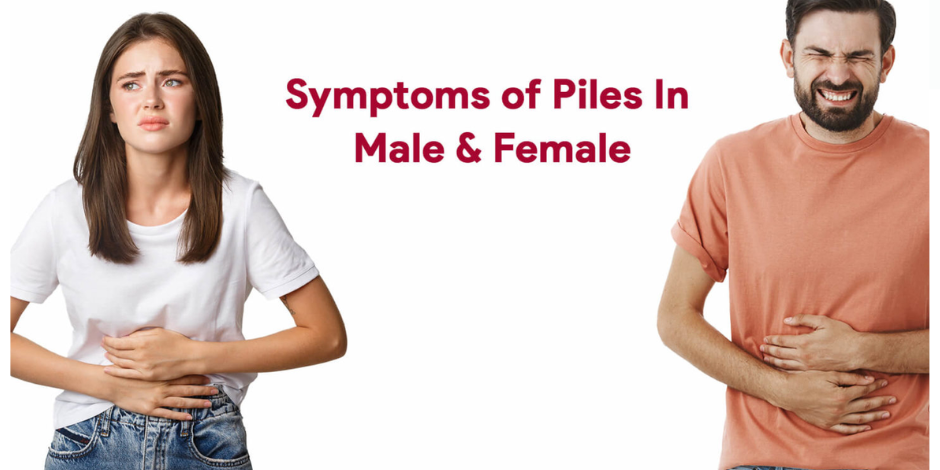Piles, also known as hemorrhoids, affect millions of people worldwide. Though often considered a general condition, many wonder if there’s a difference in symptoms between men and women. Dr. Aniket Zarkar, a specialist in hemorrhoid treatment, explains that while piles generally present similar symptoms in both genders, some differences in symptoms and severity can occur due to anatomical and lifestyle factors.
Understanding Piles
Piles are swollen blood vessels in the rectum or anus, which can cause discomfort, itching, and sometimes bleeding. They are classified as either internal (inside the rectum) or external (around the anus). Common causes include chronic constipation, prolonged sitting, pregnancy, and heavy lifting. Let’s explore how these symptoms may vary between men and women.
Symptoms of Piles in Males and Females
1. Rectal Bleeding
Both men and women may experience bright red blood in the stool or on toilet paper after a bowel movement. Rectal bleeding is often one of the first noticeable signs of piles. However, due to a higher prevalence of heavy lifting among men, this symptom may appear sooner in males.
2. Pain or Discomfort
Pain and discomfort around the anal area are common in both genders. Men may experience more intense pain if their lifestyle includes strenuous physical activity, while women may notice increased discomfort during menstruation or pregnancy due to hormonal changes and added pressure on the pelvic area.
3. Itching and Irritation
Both men and women may experience itching and irritation in the anal area due to inflamed tissue or mucous discharge. This symptom tends to be similar across both genders, although hormonal changes in women (especially during pregnancy) may make the skin around the area more sensitive.
4. Swelling Around the Anus
Swelling or lumps around the anus are typical of external piles. In both men and women, this can cause discomfort when sitting or moving. However, women, particularly those who are pregnant, may feel the swelling more prominently as pregnancy progresses and pressure in the pelvic area increases.
5. Bowel Movement Discomfort
Straining during bowel movements is a key trigger for piles, causing symptoms like pain, itching, or a feeling of incomplete evacuation. Both men and women experience this, though it may be more pronounced in men who deal with chronic constipation, as they’re slightly more prone to it due to lifestyle factors like low-fiber diets.
6. Increased Symptoms During Pregnancy (Women Only)
Pregnancy is a leading cause of piles in women, as the growing uterus puts pressure on the veins in the rectum. Hormonal changes during pregnancy also contribute to constipation, increasing the likelihood of piles. Therefore, many women experience more severe symptoms during pregnancy, which may lessen post-delivery.
7. Mucous Discharge
Mucous discharge is possible in both men and women with piles. For women, hormonal shifts, particularly during the menstrual cycle or pregnancy, can exacerbate this symptom. In both genders, this discharge may lead to increased irritation.
Why Some Differences Occur
Dr. Zarkar explains that while piles symptoms are generally the same, factors such as pregnancy, hormonal fluctuations, and lifestyle choices contribute to subtle differences.
- Anatomical Differences: Women’s bodies undergo changes during menstruation, pregnancy, and childbirth, which can increase the likelihood and severity of piles symptoms.
- Lifestyle Habits: Men are more likely to lift heavy weights and consume lower-fiber diets, which may lead to increased strain during bowel movements.
When to Seek Medical Attention
Dr. Zarkar advises seeking medical help if you experience persistent symptoms like rectal bleeding, severe pain, or a significant lump around the anus. If piles are left untreated, they can lead to complications such as anemia, thrombosis, or infection.
Treatments Available at Dr. Aniket Zarkar’s Clinic
Dr. Aniket Zarkar offers specialized, minimally invasive treatments, including laser hemorrhoid surgery, which provides faster recovery, reduced pain, and minimal postoperative care. His comprehensive approach includes dietary advice, lifestyle modification, and personalized treatment plans to address piles effectively.







